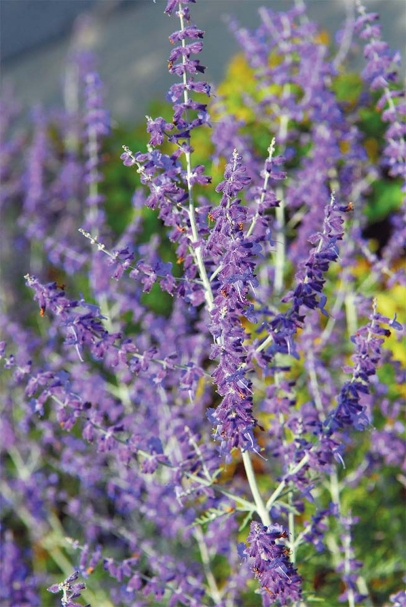Lavender Benefits Beyond the Bouquet
You might hesitate to reach for lavender in the kitchen. Its floral scent can be pungent, and it’s often used in skin care, soaps and aromatherapy. Because of its distinct aromatics, a little lavender can go a long way to add panache to food or drink.
Hailing from the mint family, lavender is an herbaceous perennial native to the Mediterranean. As far away as that is from New Jersey, lavender farms seem to be taking hold in some regions of the Garden State—with a little help in mimicking its native terrain.
“It’s a little tricky to grow lavender,” says Adrienne Crombie of Mad Lavender farm in Milford. “It grows in rocky, limestone-heavy soil and doesn’t like water. If it gets too much it rots, making it tricky during springtime here in New Jersey.”
Not only have lavender farms been popping up in the area, the use of lavender has been increasingly making its way into the culinary scene. However, not all lavender varieties are created equal.
“Some varieties have a softer, sweeter scent to them,” Crombie says, “other varieties are sharper and have higher camphor content, and these are the varieties grown for essential oil production.”
Crombie explains that lavandula angustifolia varieties are most commonly grown because they have a higher camphor content, which give them a stronger fragrance. Hybrids with other varieties are called lavandins and are more often grown for ornamental use.
“Considering that it takes about ten pounds of lavender to make one ounce of oil, growing the right type is key depending on what you’re using it for,” she says.
For those who are new to the taste of lavender, Crombie makes an infusion that can be used for making tea or for adding a twist to classic lemonade. “Boil a quart of water, add two tablespoons of dried lavender, then immediately take it off the heat since boiling it can make it bitter. It makes something simple and delicious a bit more sophisticated.”
Lavender has popped up in sweets like sugar cookies, chocolates and ice cream as well as savory dishes. And as with any spice, experimenting has its rewards.
“You have to have a spirit for experimentation to cook with lavender— it’s worth it to discover those happy surprises,” she says.
Crombie enjoys adding dried lavender buds to crème fraîche or yogurt topped with berries and honey. She also recommends toasting lavender buds in a skillet to bring out their flavor. “It changes it from being something floral and better suited for desserts to something that’s great in savory dishes like butternut-squash soup, cheese soufflés, fish dishes, roasted vegetables and more,” she says.
You may have heard that lavender can calm the nerves. The beneficial oil in lavender is extracted from the flower buds, and you can experience those effects by smelling it.
“Smell is connected to the limbic system. When we smell something, a message is sent to the olfactory bulb in our brain which affects emotional response,” says David Winston, of David Winston’s Center for Herbal Studies in Broadway. “One clinical trial piped lavender essential oil into the air system at a nursing home. They found that by using a barely detectible amount of essential oil, they were able to improve [patients’] sleep quality and reduce the use of sleep medications.”
Winston adds that other trials have shown lavender to help sleep in college students, reduce stress in postpartum women, relieve post-traumatic stress, increase focus and concentration, and reduce PMS symptoms—all from just aromatherapy.
“It’s potent stuff,” he says.
Though it’s not recommended to take the essential oil internally, consuming lavender buds in food or as a tea has a broad range of benefits.
“There are compounds in lavender oil called monoterpenes. One is called limonene, which is a sedative, and another is called linalyl acetate, which is an antispasmodic,” says Winston. “Monoterpenes also have antiviral and antibacterial properties, making it particularly useful for alleviating digestive upset, including GI stagnation, gas and bloating, as well as treating abnormal bacteria in the gut.”
What’s more, lavender can remedy a host of ailments when used topically. “It’s one of the only essential oils that you don’t have to dilute. It can be used to treat anything from athlete’s foot to first-degree burns to insect bites,” he says, adding that it’s best to test a small area of skin first, and avoid using it on young children or those with very sensitive skin. “It’s a remarkable plant with many uses.”
As you plan out your herb garden this coming spring, consider including lavender among your basil and thyme—it’s a powerful perennial of beauty and purpose.







